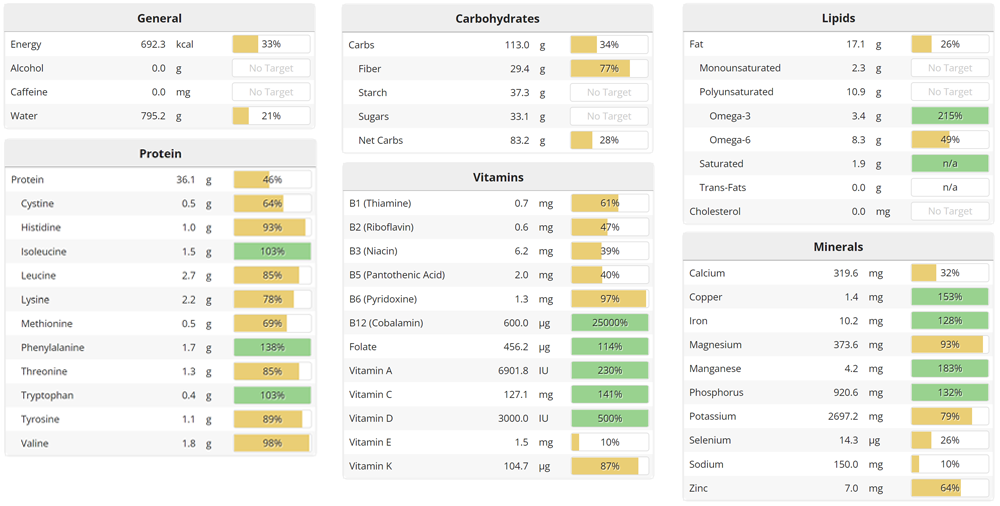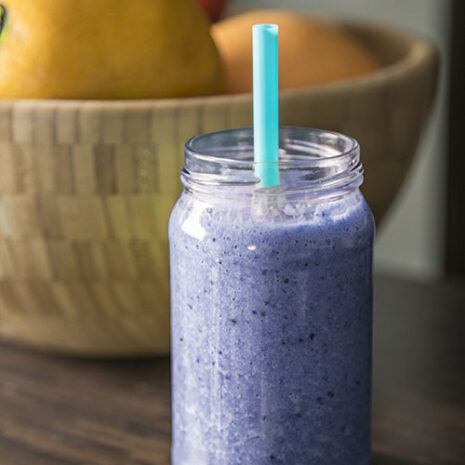My breakfast smoothie has double the fiber eaten by the average American. It’s packed with items from multiple food groups. And it has unusual ingredients you’ll rarely find in traditional smoothies. But it’s this nutrient variety that makes it such a nutritional powerhouse. So much, that I consume it six days a week for breakfast alongside my steel-cut oatmeal. And with that alone, I’ve nearly met all my daily micronutrient goals. What are the key elements for nutrient diverse smoothies? How do I make my breakfast smoothie? And what metrics are useful when analyzing a smoothie’s nutrient content? Well, let’s get into it!
Key Elements for Nutrient Diversity
Traditionally, smoothies were made with fruit and water. Some add fiber depleted juice too. And others add supplements like protein powder. But it’s been quite rare for most smoothies to venture outside that realm. While green smoothies have become trendy, more smoothies than not contain only one whole food group. Fruit.
While fruit is healthy, you don’t get a lot of nutrient diversity from one group. That’s why my morning smoothie decided to quadruple the average. Here are the four whole food groups I add to my smoothie plus a daily supplement:
Now that the key food groups are defined, here’s my smoothie recipe.
Breakfast Smoothie Recipe
Ingredients
- 1 medium Banana
- ½ cup Blueberries Frozen
- ½ cup Strawberries Frozen
- 1 cup Soy Milk
- 7½ oz Adzuki Beans Canned, No Sodium
- 2 tbsp Hemp Seeds
- 5 oz Bok Choy
- 3 softgels B12, D3, EPA/DHA Supplement
Instructions
- Blend all ingredients in a high-powered blender and serve.
Nutrient Breakdown
I’m not a calorie counter, or even nutrient counter. But I do find auditing my meals’ nutritional content every so often helpful for identifying nutritional deficiencies. Below you can see the macro and micronutrient content of my smoothie. Here is where you see the benefit of using multiple food groups. Without protein powder or animal products, we can see protein and essential amino acids are nearly met for day. With 29.4 grams of fiber, we’re doubling the consumption of the average American [3]. And healthy fats/lipids will allow better absorption of the vitamins and minerals [1]. To which you can see we have plenty. With only 33% of daily calories consumed, we’ve already met many key nutrients daily recommendations… at breakfast. Plus, the data below doesn’t even calculate all the antioxidant and phytochemical content in this smoothie.

Notes:
This nutrient packed smoothie is my daily driver along with a blueberry steel-cut oatmeal (The Perfect Breakfast). I consume 3,000 calories a day, so this breakfast provides about a third of my calories consumed. For most consuming a 2,000-calorie diet, this smoothie is enough.
I’ll also note that I rinse out my mouth with water after a smoothie to neutralize and dilute any acid. And if I’m planning to brush my teeth after, I’ll wait an hour, so I don’t scrub down the softened enamel. I got these tips from a video series Dr. Greger posted back in 2015. He had a fascinating series on how smoothies affect blood sugar levels, weight loss, and oral health. [4]
Final Thoughts
Don’t get caught in the trap of consuming smoothies made from one food group that’s supplemented with refined protein powder. Plant diversity and nutrient density are your friends. That’s why I’m sure to add greens, beans, seeds, and appropriate supplementation. This makes up my smoothie for nutritional excellence.


